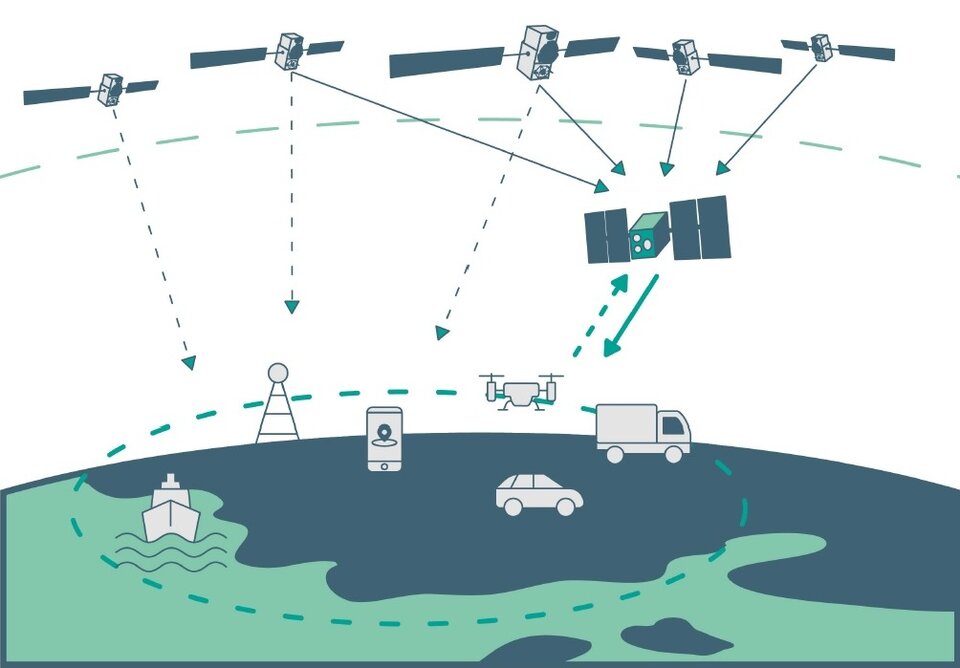Industry invited to bid for low-Earth orbit satnav demo
Europe’s Galileo constellation is already the world’s most accurate satellite navigation system, providing metre-level precision to users worldwide. The general expectation is that satnav is going to keep on getting better, in line with increasing user needs and accuracy requirements. But in fact, traditional Global Navigation Satellite Systems (GNSS) in medium Earth orbit are approaching their limits of technical performance.

While GNSS will remain a fundamental backbone, for Positioning, Navigation and Timing (PNT) services to go on improving into the future, a new element will be required. ESA’s LEO-PNT satellites, approved at last year’s Ministerial conference, will test out this concept in practice, with a mini-constellation of at least ten satellites, placed in orbit a matter of hundreds of kilometres above the surface of Earth – as opposed to the 23 222-km-distant Galileo satellites.
ESA has now launched the Invitation to Tender (ITT) calling European companies to join this endeavour. The ITT covers all aspects of ESA’s LEO-PNT Orbit Demonstrator, including the space and ground segments, system engineering aspects, operations, launch, the test user segment, experimentation, and service demonstration in representative user environments.

New satnav layer for novel services
Combining medium- with low-Earth orbit constellations on a multi-layer basis should represent a significant step forward. Medium Earth orbit was initially selected for GNSS constellations because a couple of dozen satellites at this altitude can deliver global coverage.
In addition, with less of a distance to cover down to Earth, the signals from these additional LEO-PNT satellite signals can reach places where today’s satnav signals cannot reach. And by adopting novel navigation techniques and a wider range of signal bands the satellites can address various specific user needs, such as more rapid position fixes, increased precision, resilience and signal penetration.

Kick-off of FutureNAV
LEO-PNT is supported through the ESA Directorate of Navigation’s FutureNAV programme, which also includes the GENESIS satellite to measure the shape of Earth more accurately than ever before while also boosting the positioning performance of satnav satellites.
The ESA Member States currently subscribed to FutureNAV programme Component 1 LEO-PNT are Austria, Belgium, Finland, France, Germany, Hungary, Italy, Norway, Portugal, Romania, Spain, Sweden, Switzerland, and the UK.

If you are based in one of these Member States, do you think your company might have a contribution to make to the success of LEO-PNT? The Invitation to Tender is open until the end of summer. If you are registered with esa-star, click here for more information.
To find out more about doing business with ESA, including registering with esa-star as a potential tenderer, click here.


